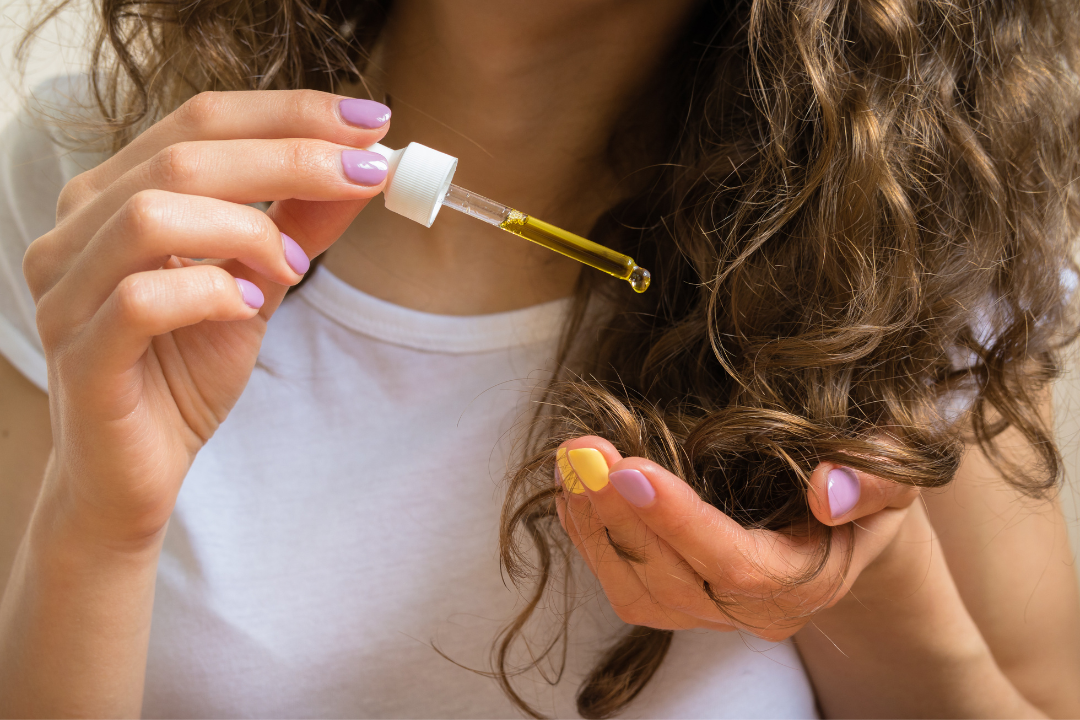Learning how to care for curly hair taught me that curly hair is more than just a texture—it’s a personality. A bold, beautiful twist (literally) on the everyday that deserves celebration and care. I’ll be honest: learning how to care for curly hair took me a while. It wasn’t just about swapping products, but changing my approach entirely. Once I figured it out, my curls stopped being unpredictable and started becoming my signature.
Whether you’re starting your curly hair journey or looking to refine your routine, this guide has you covered—from the science to the styling.
Step 1: Understanding Curly Hair
Curly hair isn’t a challenge—it’s just different. The shape of your follicles creates the twists and spirals that give your hair bounce and volume. But this same structure makes it more prone to dryness and frizz.
Real talk: Your curls aren’t meant to be tamed—they’re meant to be nurtured.
Forget the myth that curly hair is unmanageable. With the right routine and mindset, it can be one of your best assets.
Step 2: Build a Curly Hair Routine That Works
Step 2 is all about building a curly hair routine that actually works—and let me tell you, once I ditched sulfates and started tuning into what my curls really needed, everything changed. It wasn’t just about switching products—it was about being gentler, more intentional, and way more consistent.
A solid wash day routine is the foundation. Start by cleansing with a sulfate-free shampoo or co-wash. These options clean your scalp and hair without stripping away the natural oils your curls desperately need. Then comes conditioning—deep conditioning, to be exact. Doing this regularly helps restore moisture, strengthen your strands, and prevent breakage.
While your conditioner is still in, it’s the perfect time to detangle. Use a wide-tooth comb or your fingers, and work gently from the ends up. Once you’re detangled, it’s time to style. Apply a leave-in conditioner, then follow with a curl cream or gel to lock in that definition. I always section my hair as I go to make sure every curl gets the love it deserves.
For drying, skip the towel. Traditional towels cause frizz and breakage—so instead, opt for a microfiber towel or an old cotton T-shirt. Let your hair air-dry or use a diffuser on low heat if you’re short on time. And here’s my favourite trick: apply all your styling products to soaking wet hair. It locks in moisture, enhances definition, and seriously cuts down on frizz.
Step 3: Protect What You’ve Built
Step 3 is all about protecting the curl magic you’ve worked so hard to build. Curly hair doesn’t just need moisture and care on wash day—it thrives when you protect it consistently in between. Once I started being more mindful about how I treated my hair between washes, I noticed a huge difference in how long my curls stayed defined and healthy.
At night, the way you sleep matters more than you might think. Switching to a silk or satin pillowcase—or wrapping your hair in a silk scarf—helps reduce friction, frizz, and breakage while you sleep. It’s a small change that makes a big impact. During the day, it’s just as important to protect your curls from environmental stressors like sun and pollution. I like to use a UV-protectant spray or a nourishing hair oil that helps shield my strands without weighing them down.
And if you use hot tools, don’t skip the heat protectant. Ever. It acts like a safety net for your curls, preventing unnecessary damage and dryness. A quick bonus tip that’s saved my volume more times than I can count—before bed, loosely tie your hair up at the top of your head in a pineapple or soft scrunchie. It helps preserve your curl pattern and keeps things bouncy for the next day.
Special Considerations for Curly Hair
When it comes to curly hair, there are a few unique challenges that come with the territory—namely, frizz and shrinkage. But here’s the thing: these aren’t flaws, they’re just part of the curly experience. Once I stopped fighting them and started understanding them, my entire approach shifted.
Frizz, for starters, usually signals a need for more moisture. Hydration is your best defence. When your curls are properly moisturised, they’re less likely to seek moisture from the air—which is what causes that halo of frizz. So, don’t skip the deep conditioner, and always seal in hydration with a leave-in or oil.
Shrinkage, on the other hand, is totally natural and actually a sign of healthy curls. But if you’re aiming for a more stretched-out look, there are a few easy tricks. Using a diffuser on low heat can gently elongate curls while drying. You can also try stretching techniques like braiding, twisting, or banding your hair while it’s still damp. These methods give you length without compromising your curl pattern—and they help switch up your style without heat.
Colour-Treated Curls
Colour adds another layer of care. Always use products labelled as colour-safe and hydrating. Deep condition more frequently, and avoid harsh sulfates.
Pregnancy + Hormonal Shifts
Hormones can make your curls behave differently—more volume, less definition, new textures. Use gentler products, avoid heat styling, and be patient with your hair’s changes.
Reminder: Every curl journey is different. Trial and error is part of the process; your curls will tell you what they need—if you listen.
Key Takeaways
Knowing how to care for curly hair starts with embracing its uniqueness. Hydration, gentleness, and protection are your best friends. With the right approach, your curls can become your proudest feature.
Start simple: clean with care, moisturise like it’s your job, protect your texture, and celebrate the bounce.
Healthy curls are happy curls. You’ve got this.
